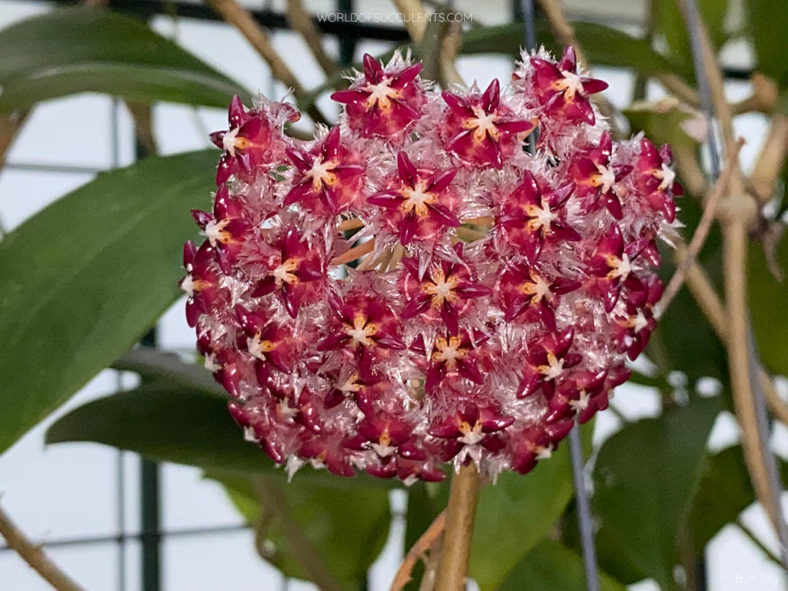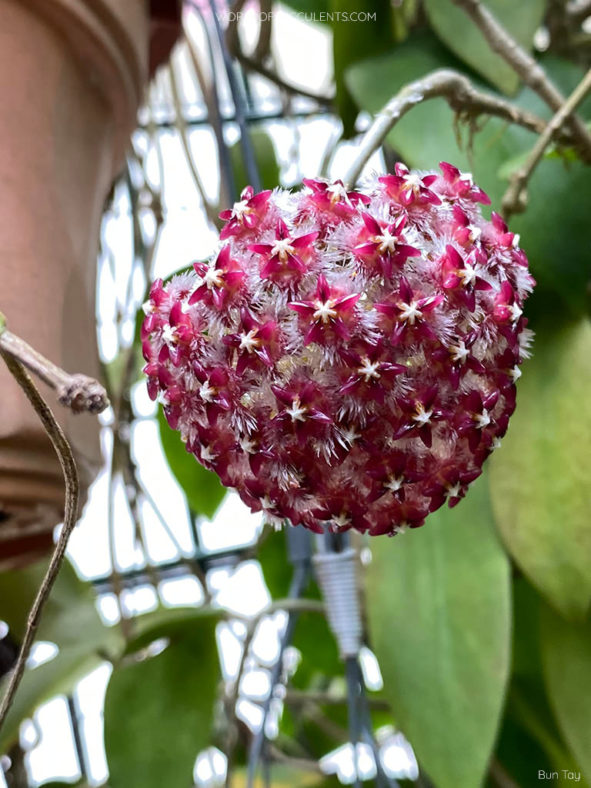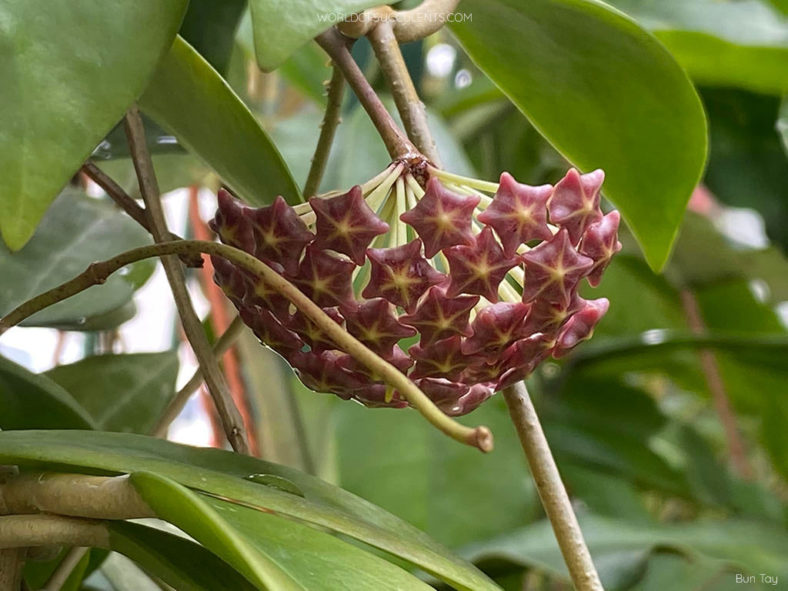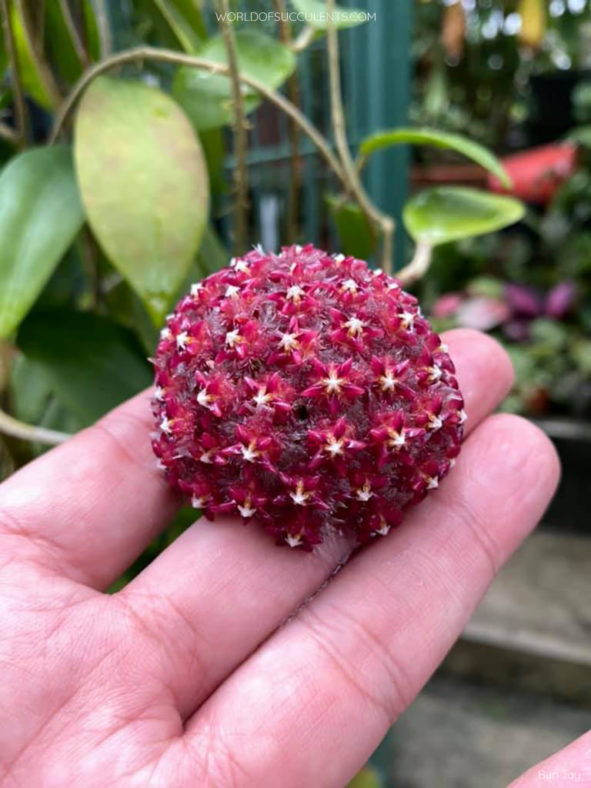Scientific Name
Hoya elmeri Merr.
Synonym(s)
Hoya mindorensis subsp. superba
Scientific Classification
Family: Apocynaceae
Subfamily: Asclepiadoideae
Tribe: Marsdenieae
Genus: Hoya
Etymology
The specific epithet "elmeri (EL-mer-ee)" honors Adolph Daniel Edward Elmer (1870–1942), an American botanist and plant collector mostly active in the Philippines.
Origin
Hoya elmeri is native to Malaysia (Sabah) and the Philippines (Luzon). It is common in Sabah and grows as a climbing epiphyte or lithophyte along streams.
Description
Hoya elmeri is a climbing plant with wiry stems and dark green leaves sparsely covered with small, wort-like growths and paler, barely visible veins. The stems are smooth, slightly fleshy, with few branches often rooting, and internodes up to 4.8 inches (12 cm) long. The leaves are opposite, fleshy, leathery when dry, somewhat elliptic, usually ending in a short sharp point, and attached to the stems by a thick petiole up to 0.4 inches (1 cm) long. They can measure up to 6 inches (15 cm) long and 2.6 inches (6.5 cm) wide.
The flowers appear in attractive clusters from spring to summer and can reach up to 0.6 inches (1.6 cm) in diameter. The corolla is glabrous outside, silky, and densely hairy inside, with broad, spreading, or recurved lobes. The corona is red or purple, sometimes orange, and can reach up to 0.3 inches (0.8 cm) in diameter.

How to Grow and Care for Hoya elmeri
Light: H. elmeri grows well indoors in bright indirect light but will tolerate pretty low light levels, although it becomes weak and leggy, produces fewer leaves, and may not flower without bright light.
Soil: Whatever soil you plant your H. elmeri in should be well-draining, provide excellent aeration, and not hold too much water.
Temperature: As a tropical plant, it thrives in warm, moist, humid climates. Keep it away from drafty windows and doorways during the colder months. H. elmeri can withstand temperatures as low as 40 °F (4.4 °C). USDA Plant Hardiness Zones 11a to 11b, 40 to 50 °F (4.4 to 10 °C).
Watering: Water regularly in spring and summer. Soak the soil thoroughly until the water drains out of the drainage holes. Then, let the soil dry out between waterings. H. elmeri is relatively dormant and needs only moderate watering in fall and winter.
Fertilizing: This plant is not a particularly heavy feeder. However, it appreciates some extra micronutrients and macronutrients. Therefore, feed with half-strength high-potassium fertilizer every two weeks or so during the growing season.
Repotting: As an epiphytic plant, H. elmeri has quite shallow root systems and does not require a deep container, nor does it need to be repotted frequently. It prefers growing a bit tight in its container. Therefore, repot in spring if it outgrows its container.
Propagation: You can easily get new plants from your existing H. elmeri by stem cuttings. Leaf cuttings can be more problematic. The best time to take cuttings is spring or summer when the plant is actively growing. The easiest method of propagation is by layering. Starting this plant from seeds is the simplest but the most time-consuming way of propagation. Sow the seeds in spring or summer in well-draining soil.
Learn more at How to Grow and Care for Hoya.
Toxicity of Hoya elmeri
H. elmeri is non-toxic to humans and pets.
Links
- Back to genus Hoya
- Succupedia: Browse succulents by Scientific Name, Common Name, Genus, Family, USDA Hardiness Zone, Origin, or cacti by Genus
Photo Gallery
Click on a photo to see a larger version.


